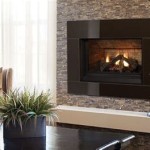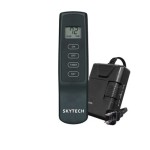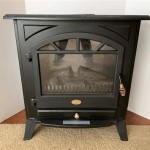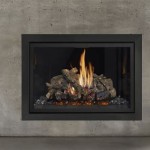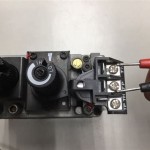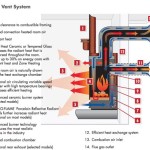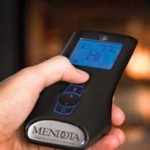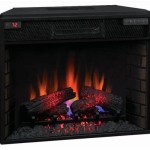Indoor-Outdoor Fireplaces: Bridging the Gap Between Interior Comfort and Exterior Ambiance
Indoor-outdoor fireplaces represent a sophisticated architectural trend that seamlessly integrates the warmth and beauty of a fireplace into both interior and exterior living spaces. These fireplaces serve as a captivating focal point, offering a unique blend of functionality and aesthetics, enhancing the value and enjoyment of a property. The installation requires careful planning and consideration of various factors to ensure safety, efficiency, and compliance with local building codes.
These dual-purpose fireplaces are designed to be enjoyed from both inside the home and from an adjacent outdoor area, such as a patio, deck, or garden. They essentially bridge the gap between indoor and outdoor living, creating a harmonious transition and encouraging year-round use of outdoor spaces, even in cooler climates. The design often features a shared firebox accessible from both sides, with distinct fascias and surrounding materials reflecting the style of each respective space.
The increasing popularity of indoor-outdoor fireplaces stems from a growing desire to extend living spaces beyond the traditional confines of the home. Homeowners are increasingly seeking ways to create outdoor environments that are as comfortable and inviting as their interiors. Indoor-outdoor fireplaces cater to this trend, providing a central gathering point for socializing, relaxing, and enjoying the ambiance of a flickering flame.
Key Considerations for Planning and Installation
Successfully integrating an indoor-outdoor fireplace requires meticulous planning and adherence to safety guidelines. Several key aspects merit careful attention during the design and installation phases.
Structural Integrity: The fireplace structure must be robust enough to support its weight and withstand the effects of both indoor and outdoor environmental conditions. This includes accounting for wind loads, snow accumulation, and potential seismic activity. Professional structural engineers should be consulted to ensure the fireplace is properly integrated into the building's framework, particularly when incorporating into existing structures.
Ventilation and Flue Systems: Proper ventilation is paramount to prevent smoke from entering either the indoor or outdoor space. The flue system must be appropriately sized and designed to effectively exhaust combustion gases. Codes often specify minimum flue heights and clearances from surrounding structures to ensure adequate draft and prevent downdrafts. Consider using a professionally installed venting system that meets or exceeds local building codes.
Material Selection: Choosing appropriate materials that can withstand both interior and exterior conditions is critical. Indoor-outdoor fireplaces are exposed to varying temperatures, moisture, and UV radiation. Durable materials such as brick, stone, concrete, and stainless steel are commonly used for their resistance to weathering and heat. Materials chosen for interior facing sides can emphasize different elements than their outdoor equivalents, but a clear design path should be selected that blends well with both environments.
Fuel Options and Efficiency
The choice of fuel significantly impacts the functionality, aesthetics, and environmental impact of an indoor-outdoor fireplace. Several fuel options are available, each with its own advantages and disadvantages.
Wood-Burning Fireplaces: Traditional wood-burning fireplaces offer the classic ambiance of a crackling fire and the aroma of burning wood. However, they require a readily available source of firewood and generate smoke and particulate matter. Wood-burning fireplaces must comply with local regulations regarding emissions and air quality. Considerations include the type of wood burned, proper storage, and the installation of smoke detectors.
Gas Fireplaces: Gas fireplaces offer convenience and ease of use, as they can be easily ignited and controlled with a switch or remote. They burn cleaner than wood, producing fewer emissions and eliminating the need for firewood storage. Gas fireplaces can be fueled by natural gas or propane, requiring a connection to a gas line or a propane tank. They provide consistent heat and can be equipped with features such as adjustable flame heights and thermostatic controls.
Electric Fireplaces: Electric fireplaces offer a smoke-free and vent-free option, making them suitable for installations where traditional venting is not feasible. They use electricity to generate heat and simulate the appearance of a flame. While electric fireplaces don't offer the same authentic feel as wood or gas fireplaces, they are energy-efficient and can be easily installed in a variety of locations. They are often chosen for their safety and ease of operation.
Design Considerations and Aesthetic Integration
The design of an indoor-outdoor fireplace should complement both the interior and exterior architectural styles, creating a cohesive and visually appealing feature. Consider the following design aspects:
Style and Materials: The fireplace's style should align with the overall aesthetic of the home and outdoor space. Modern designs often feature clean lines, minimalist detailing, and materials such as concrete and stainless steel. Traditional designs may incorporate brick, stone, and intricate detailing. The choice of materials should reflect the architectural style and create a harmonious visual connection between the indoor and outdoor areas.
Size and Proportion: The fireplace's size should be proportional to the scale of both the indoor and outdoor spaces. A fireplace that is too small may get lost in a large outdoor area, while a fireplace that is too large may overwhelm a smaller indoor space. Careful consideration of the dimensions and proportions is essential to create a balanced and visually appealing feature.
Integration with Landscaping and Furnishings: The fireplace should be seamlessly integrated into the surrounding landscaping and furnishings. Consider incorporating seating areas, outdoor lighting, and decorative elements that complement the fireplace's design. The placement of plants, pathways, and other landscape features can enhance the ambiance and create a welcoming outdoor living space.
Safety Features: Fire safety is paramount when designing and installing an indoor-outdoor fireplace. Ensure adequate clearance from combustible materials, install spark arrestors to prevent embers from escaping, and provide readily accessible fire extinguishers. Regularly inspect and maintain the fireplace to ensure it is in safe operating condition.
The incorporation of indoor-outdoor fireplaces represents a significant investment that can substantially enhance the appeal and utility of a property. A well-designed and properly installed fireplace adds value, provides a focal point for social interaction, and encourages the enjoyment of outdoor spaces throughout the year. The design and construction process requires careful planning, attention to detail, and the expertise of qualified professionals. By adhering to safety guidelines and considering aesthetic integration, homeowners can create a stunning architectural feature that seamlessly connects indoor and outdoor living.
Beyond aesthetics and functionality, indoor-outdoor fireplaces offer a unique opportunity to create memorable experiences. They provide a warm and inviting ambiance for gatherings with family and friends, creating a focal point for conversation and relaxation. The flickering flames and cozy warmth can transform an ordinary outdoor area into a captivating space that is enjoyed throughout the seasons.
The integration of smart home technology can further enhance the functionality and convenience of indoor-outdoor fireplaces. Smart fireplaces can be controlled remotely, allowing homeowners to adjust the flame height, set timers, and monitor safety features from a smartphone or tablet. Smart features can also integrate with other home automation systems, such as lighting and audio, to create a seamless and immersive outdoor experience.

Double Sided Indoor Outdoor Fireplace Heat Glo

White Mountain Hearth Dvct40csp Out Rushmore Clean Face Direct Vent Double Sided Indoor Outdoor Fireplace With Log Set 40 Inches

Benefits Of Installing An Indoor Outdoor Fireplace Wyckoff

Stellar Transcend Indoor Outdoor Double Sided Gas Fireplace Fireside Hearth Home

Double Sided Indoor Outdoor Fireplace Heat Glo

Indoor And Out No Limitations With Davinci Lopi

53 Most Amazing Outdoor Fireplace Designs Ever Huis Ideeën Design House

Replacing Fire Pits With A Versatile Indoor Outdoor Fireplace

Mason Lite Indoor Outdoor Wood Burning Fireplace Kit Patio Furnishings

Indoor Outdoor Fireplace Fireplaces Designs
Related Posts

